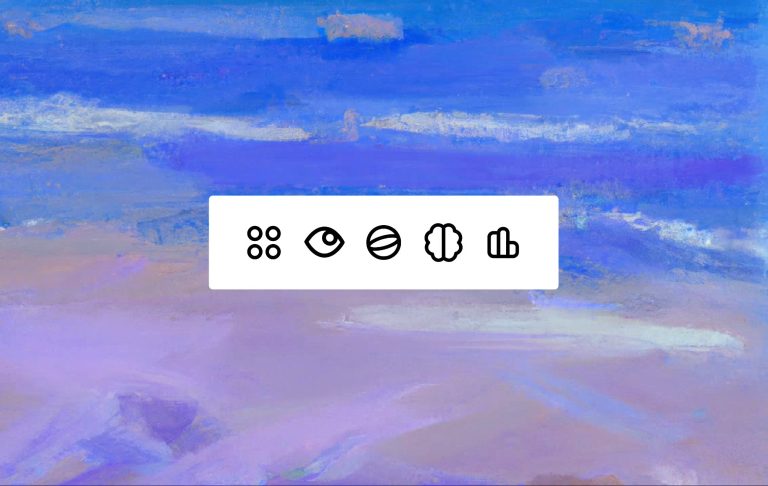Dive into 'The Complete Guide: How to Use ChatGPT API in Application' for an insightful journey into integrating ChatGPT API into your projects. Uncover step-by-step instructions, expert tips, and practical examples to master ChatGPT API, revolutionizing your application's conversational...

Have you ever wondered how technology can understand and respond to human language?
Enter the ChatGPT API by OpenAI, a leap forward in conversational AI technology. Utilizing advanced language models like GPT-3 and GPT-4, this API empowers developers to craft applications that not only interact but truly understand and respond in a human-like manner, revolutionizing the way we interact with digital platforms.
Overview of ChatGPT API
ChatGPT API is renowned for its efficiency in processing natural language inputs. This makes it a valuable asset for the creation of intelligent chatbots as well as virtual assistants.
The ability to read and produce text that is similar to human conversation enhances the user experience, making interactions more intuitive and enjoyable. This API does not just understand queries but also keeps context information, which leads to more meaningful and coherent conversations.

Importance of ChatGPT API in Programming
In the digital age, the demand for intelligent and interactive user interfaces is at a constantly increasing rate. ChatGPT API meets this demand changing the dynamic of interactions between users across different digital platforms.
Developers are provided with the tools to build apps that aren't just efficient, but also capable of recognizing and adapting to human language variations. The incorporation of the ChatGPT API with applications signals an entirely new way of programming where the focus will be on making tech usable and accessible to users.
In addition, ChatGPT API is an inspiration for creativity, allowing developers to explore new avenues for AI-driven applications. From chatbots for customer service to personal virtual assistants providing an array of possibilities, and more personalized and human-centric technological solutions.
Its impact goes beyond technical capabilities, impacting how companies and services interact with their customers, and thereby providing an advantage in a market that increasingly emphasizes customer experience.
How to Get the ChatGPT API Key
Locating an API key for ChatGPT which allows access to the great capabilities of processing languages is an easy process. This is a step-by-step process to find and safeguard your API key
Log On To The OpenAI Platform: Navigate to the OpenAI website and sign up. If you do not have a user account, you'll need to create one.
The Access Section For API Keys: If you log into your account, you'll be allowed access to the API Section where you will be able to manage API keys.
Create a New API Key: Select the option to generate a new API key. The key serves as your personal identification number and access token whenever you utilize the ChatGPT API. ChatGPT API.
Keep Your API Key Safely: After your API Key is generated, make sure you back up and save the API key. It's crucial since the API key will not be displayed again and is necessary for any API requests.
Implement API Keys in Your Code: Utilize the API Key in your code to authenticate your account. Then, you can begin to utilize ChatGPT API's features. ChatGPT API's capabilities.


How to Secure and Protect Your ChatGPT API Key
The API key that you receive is like the password for your account. It is vital to safeguard the API key from theft to guard against unauthorized access to OpenAI services. Here are a few good ways to secure your API keys:
Beware of Hardcoding: Do not hardcode API keys directly into the source code of your app, especially if it's publicly accessible.
Use Environment Variables: Save the API key inside Environment Variables and in the settings of secure apps that aren't elements of the source code base.
Restrict Access: If you collaborate ensure that ONLY authorized personnel have access to the API keys.
Frequently Rotate API keys: Regularly update and modify your API keys to ensure that you're able to reduce security risks.
If you adhere to these guidelines, you will be able to ensure the safe use of your ChatGPT API key while also ensuring the integrity and security of your applications.
Setting Up Your Development Environment
The creation of a productive development environment is vital for working with ChatGPT API. Here's how you can select the appropriate tools:
Selecting the Correct Programming Language
Python: Highly recommended for novices because of its simplicity and the comprehensive support provided by OpenAI. Python's frameworks and libraries make it easier to integrate API integration.
JavaScript/Node.js: Ideal for web developers seeking to incorporate ChatGPT into web-based applications. Node.js has asynchronous capabilities which makes it ideal for chat applications that run in real-time.
Additional Languages: OpenAI offers support for various languages. Select one that is compatible with the requirements of your project and your knowledge.

Required Tools and Libraries
OpenAI SDK: This Software Development Kit provided by OpenAI makes it easier to interact via the API. For Python to use it, you need to pip to run openai.
Code Editor: A powerful code editor such as Visual Studio Code or PyCharm improves the efficiency of code with features such as syntax highlighting and complete code.
Version Control: Tools like Git aid in managing the versions of code, especially for teams working together.
Tool for Testing: Depending on the language used, tools such as Postman for API testing, or PyTest for Python make sure that your integrations function according to the plan.
By selecting the right language and putting in the tools you need, you can build a development environment that's efficient and suitable for working using ChatGPT API.
Integrating ChatGPT API In Applications
Creating API Instances
Creating an API instance is a critical step in integrating the ChatGPT API into your applications. Below is a basic guide:
Import the OpenAI Library: For Python, use import openai.
Set Your API Key: This can be done by assigning openai.api_key = 'YOUR_API_KEY'. Ensure your API key is kept secure and not hard-coded into your application.
Instantiate the ChatGPT Model: Use the command response = openai.ChatCompletion.create(model="gpt-3.5-turbo", messages=messages) where messages is a list of message objects.
Best Practices :
Effective Token Management: Each API request requires tokens. Create your prompts so that they minimize token consumption without compromising the quality of your interactions.
Handling API Responses: Processing API responses with care. Ensure that you have mechanisms to analyze and implement the API response within your application.
Asynchronous API Calls: To improve the performance of web applications, use API calls that are synchronous. This method prevents the blockage by the primary thread which ensures an improved user experience.
Error Logging and Handling Implement robust error handling to deal with any API call errors. Recording these events can aid in fixing the issue and improve the performance of the application.
Remember, integrating ChatGPT in your application is not just about technical implementation. It's also about understanding the nuances of conversational AI and applying them effectively to enhance user experience. Each application might require custom tweaks for optimal performance and user engagement.
Implementing ChatGPT API Requests
Making sure that you can efficiently process responses and requests is essential when using ChatGPT API. Here's an efficient method:
Formulate The Request: Clearly define your request or question and then structure it in a manner that is succinct but also sufficient in detail to allow ChatGPT to comprehend. The objective is to obtain relevant responses that are clear and concise.
The Request: Use the OpenAI library's methods for sending requests to API. Make sure the security of your API key is properly integrated and that your parameters for the request (like model type, temperature, etc.) are set correctly.
Processing and Receiving Responses: Once you receive a response from the API, process it effectively. Parse the JSON response to extract the required information. Handle any errors or unusual responses gracefully.
Feedback Loop: Use the response to improve your subsequent requests. The more precise your request is, the more accurate the API's response will be.
ChatGPT API Advanced Tips and Tricks
Optimizing ChatGPT API use and identifying common problems requires different strategies that are more advanced:
Efficient Token Usage: Understanding how tokens function and designing your prompts in a way that reduces the consumption of tokens without sacrificing quality is crucial. It's about balancing detail and conciseness.
Cache Responses: If applicable the cached responses are cached for common queries. This decreases the amount of API calls and improves the response time for requests that are repeated.
Asynchronous Calls: Implementing asynchronous calls can greatly improve the performance of apps that rely heavily on APIs, specifically for web-based platforms.
Error Handling: Develop robust error-handling mechanisms. Record detailed error messages to determine patterns or recurring problems, and help you through troubleshooting.
API Versioning: Maintain your application in line with the most current API versions. Make sure to regularly update your codebase to take advantage of new capabilities and improvements provided by OpenAI.
Test of Load: Perform regular load tests to make sure your application can handle the expected amount of requests without degrading performance.
Monitor API Limits: Make sure you are aware of the API limits, and keep inside the limit of your API to stay clear of any unexpected interruptions to service.
Security Principles: Make sure that all information that is handled through the API is handled securely while respecting the privacy of the user and standards of compliance.
By incorporating these innovative techniques, you can enhance the functionality, reliability, and efficiency of applications using ChatGPT API.
Examples of Real-world ChatGPT API Applications
ChatGPT API is being used across a variety of industries, demonstrating its flexibility and impact:
Customer Support Bots: Companies have integrated ChatGPT API into their customer support portals, which allows for efficient, 24-hours automatic responses to customers' queries dramatically reducing wait time and increasing satisfaction of customers.
Educational Tools: Educators and e-learning platforms are using ChatGPT API to build Interactive learning tools. These AI tutors offer personalized educational content, help students with questions, and provide an engaging learning experience.
Content Generation: Media and Content platforms use ChatGPT API to create creative written content such as news, articles, and marketing materials, enhancing productivity while sparking imagination.
Healthcare Assistance: In healthcare, ChatGPT API helps resolve patient inquiries, offering health tips and also assisting with mental well-being through AI via conversation.
A Case Study of Duolingo: Duolingo is a learning app for languages that have integrated ChatGPT to improve its chatbot to make language practice more engaging and tailored for users.

Conclusion
So far, we've explored the ins and outs of the ChatGPT API, from obtaining an API key to implementing it in real-world applications. The versatility and efficiency of ChatGPT API make it a transformative tool in the AI and programming landscape.
In a nutshell, ChatGPT API is a doorway to an array of possibilities. If you're an experienced developer or are just starting your journey, the opportunity to build innovative and intelligent applications is huge. Explore this amazing technology, test its capabilities, and become a member of this AI revolution.












